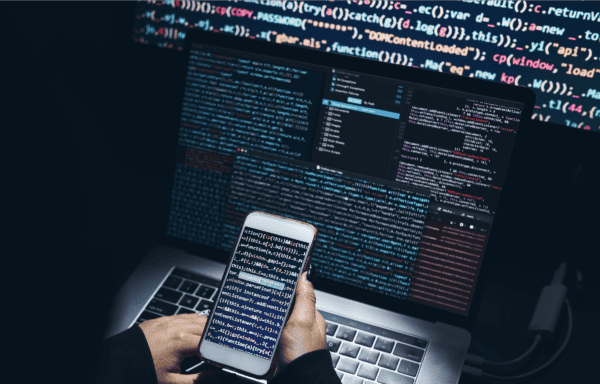The Importance of Bring Your Own Device (BYOD) Policies for Organizations

With the rise of Bring Your Own Device (BYOD) policies in the workplace, there are more BYOD security risks that both employees and managers need to think about and be aware of than ever before.
The first question to think about it: Are some people are too “unimportant” to attack? Or does everyone need to lock their personal devices and keep their software up to date? Does it really matter if your account managers or marketing team update their iPhones to the latest operating systems? Or make sure they are running the most recent version of Acrobat? And on top of that, how would an organization ensure the above?
Is anyone too “unimportant” for a cyberattack?

To answer our first question – no. There is no one too “unimportant” to attack. Bad actors do not discriminate. Think of bad actors like water and your organization a boat ― cybercriminals will infiltrate even the tiniest crack to gain access and take down whatever they can. Attackers may not care about employees’ data and financials, but they certainly care about sensitive company data and financials they can unlock within the organization. This is where BYOD security measures come can into play to secure everyones’ personal device.
According to the SANS Institute website, about 31% of employees polled “sometimes,” “rarely,” or “never” install software updates. Depending on the size of your business, that could be a significant number of vulnerable endpoints. Protecting sensitive data on employee-owned devices is crucial to prevent unauthorized access and potential breaches. If cybercriminals can gain access to an endpoint, such as a mobile device, they have a crack to slink into and infiltrate an organization’s whole company network.
Employee-focused BYOD security tips

Data protection and endpoint security solutions are essential in a BYOD environment to reduce security threats, safeguard sensitive information, and maintain network integrity. Mobile device management is crucial for managing and securing BYOD mobile devices, enabling remote device configuration, data encryption, and application management. Here are some tips to help protect your personal BYOD environment:
Use strong passwords and MFA whenever possible on personal (and business) devices
Using a second factor that is biometric (like a fingerprint) or physical (like a Yubikey) is even safer in the event your mobile device gets stolen. Strong passwords and multi-factor authentication (MFA) are crucial for protecting data on stolen devices.
- Update devices regularly
- Most updates have security fixes and shouldn’t be ignored.
- Run auto-update on computers and mobile devices.
- Make sure you are downloading software from trusted sites
- Enable automatic locking with password protection on your computers and phones
Company-focused BYOD tips for protecting company data

- Create and enforce company-wide BYOD policies.
- Creating the BYOD policy is not enough. Ensuring that employees continually follow the security policies is essential.
- Require multi-factor authentication (MFA) for all business accounts.
- This is an easy way to reduce your company’s security risks.
- Implement comprehensive logging.
- This records all access to company services and alerts on possible security risks, like a potentially risky login (examples include logins from an unexpected country and multiple login attempts with MFA failures).
- Implement an endpoint management system
- Install the endpoint management system on all devices. These tools have the ability to push updates, control which apps employees can download, and manage a lost or stolen device remotely to protect sensitive data from unauthorized access.
- Enforce an acceptable use policy.
- Be sure the policy prohibits risky behaviors, such as downloading unknown software or jailbreaking phones.
- Ensure that all employees read this and agree to it by signing this policy.
The goal of BYOD is to make work easier for your employees. Unfortunately, it can make work easier for bad actors as well. After ensuring all of the above security measures are in place, continue to review them and work on fostering a security-forward culture through education, discussion, and buy-in from all parts of the organization.
Conclusion
If you’re looking for more guidance on how to move your cybersecurity program forward, Cyber Defense Group can help. We are shifting the cybersecurity consulting paradigm to address the needs of mid-market, cloud-native or cloud-reliant companies who are experiencing rapid growth. Our right-sized, results-driven approach will help you meet your immediate needs, but also ready you to navigate what’s ahead. Get in touch, and see what results are possible for your organization.